EASTERN | DESERT | WARE
GAS | CHROMATOGRAPHY | MASS | SPECTROMETRY
|
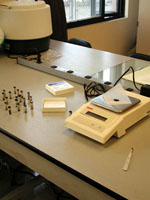
|
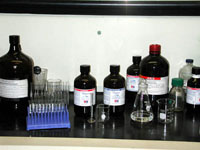
|
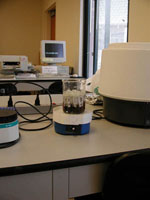
|
| After
grinding a small fragment of a sherd, of which the surfaces are removed, into
a fine flour, 400 mg of this is transferred to a clean, glass test-tube. |
Under
a fume hood, wearing gloves to prevent contamination, 1 ml of a 1:2 mix of
methanol and chloroform is added and thoroughly mixed with
the powder. |
Powder
and solvent are then sonicated (agitated) for 30 min. This dissolves the
fatty residues which may have been trapped in the pottery. |
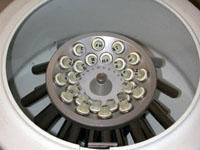
|
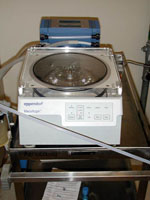
|
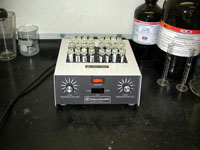
|
| In 15
min., using an ordinary laboratory centrifuge, the solvent which now contains
the fatty residue, is separated from the solid pottery powder. |
The
clear liquid is transferred to another test-tube which is dried in a vacuum
centrifuge. The first test-tube is again filled with solvent and agitated. |
After
three cycles, the dry residue is taken up in 60 µl ethyl-acetate
and 40 µl of BSTFA with 1% TMCS is added. This mix is heated
to 60 °C for one hour. |
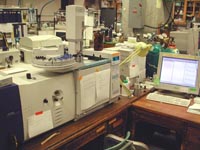
|
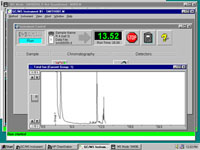
|
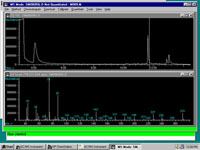
|
| Of the
now derivitized sample, 1 µl is injected in the gas-chromatographer
mass-spectrometer (GC/MS) of the Pasarow Laboratory at UCLA. |
In the
GC/MS the sample is evaporated and separated into its components, including
the fatty acids. This process takes about 30-45 min. |
After
separation the mass of each of the components is measured. The resulting spectrum,
as well as each individual peak, can now be studied. |
|
|
|
|
